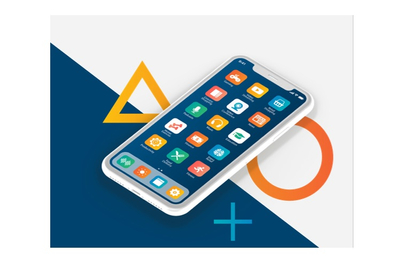
Once upon a time, building a smartphone app was about nailing your keywords, hyping the product, and hoping for a spike in downloads. Fast-forward to today’s fiercely competitive app economy, and it’s clear that getting an install is just the beginning.
So, what is the real challenge? It is keeping users from deleting your app before they’ve even explored its value.
According to global benchmarks across 31 mobile categories, day 1 app retention averages just 25.3%—and by day 30, it plummets to a sobering 5.7%. Even more striking: an average app loses 77% of its daily active users within the first three days post-install. The message is unmissable—retention is the real battleground.
Based on learnings from working with clients across fintech, edtech, retail and healthtech, one thing is clear: uninstalls aren’t just metrics of loss. They’re diagnostic signals. What looks like churn is often feedback on what needs fixing—from UX design flaws to mismatched expectations.
Why users bail before the app even warms up
App deletions are rarely impulsive. More often than not, users quit because something in the experience failed to deliver immediate value or created friction. Common triggers include:
• Lack of clear value upfront: If users can’t see the payoff in the first minute, you’ve already lost them.
• Poor user experience: Sluggish loading, confusing menus, crashes, or cluttered layouts drive people away faster than you can load a welcome screen.
• Aggressive monetisation or alerts: Full-screen pop-ups, autoplay ads, or overenthusiastic push notifications can push users to uninstall before they’ve even explored the product.
• Resource drain: Apps that guzzle battery or data are often the first to go.
• Stale or irrelevant content: A lack of updates or customisation signals an app isn’t keeping pace with users’ evolving expectations.
These aren’t one-off gripes. They’re systemic symptoms—and understanding them can set the stage for strategic intervention.
From app downloads to habits
Uninstalls may be inevitable, but they aren’t irreversible. What matters is how well brands respond—with tools, tactics and thoughtful design.
Track uninstalls—and the moments leading up to them.
It’s not enough to know people are leaving—you need to know why. Tools like uninstall tracking and funnel analytics can offer critical insight.
Are exits peaking after a new update? Are crash rates rising in specific devices or OS versions? Is there a time-of-day or usage pattern that correlates with deletions? Even factors like seasonality or momentary demand shifts can impact retention.
Streamline performance. Apps that load fast and flow intuitively retain better.
Identify your app’s ‘hero moment’—the feature users come for—and reduce the taps to reach it. If most users open your app to check credit scores or log meals, they shouldn’t have to dig through three screens. Also, deploy crash reporting tools and error monitoring systems to proactively fix glitches.
Make onboarding count. Those first few interactions post-install are make-or-break. A cluttered or overbearing sign-up flow can trigger an early exit. Instead, keep the onboarding light and lead users straight to value.
Personalisation helps—whether it’s showing relevant offers based on location or content based on past browsing. Cross-channel engagement via email, SMS, or WhatsApp can also nudge users who haven’t returned—or remind them post-uninstall.
Balance monetisation with experience. It’s tempting to drop a paywall or interstitial ad early, but timing matters. If a fitness app flashes a ‘Go Premium’ prompt before the user even logs a single workout, it feels like a transaction, not a solution.
Let the user build some momentum before surfacing upgrade nudges. In ad-supported apps, place banners during natural pauses instead of interrupting key tasks.
Privacy is the new UX—and a retention lever
With rising consumer awareness around data privacy, users want to know not just what you collect, but why. And apps that respect this tend to retain better.
Avoid asking for every permission at once. Instead, contextualise the request: ‘Enable location to find nearby offers?’ with the option to skip or revisit later. Offer a simple, transparent privacy dashboard where users can toggle permissions, view data usage, or revoke access.
Building trust through clarity and consent isn’t just ethical—it’s good business. Especially in a retention landscape where anxiety often leads to uninstalls.
Retention doesn’t always need a nudge. Sometimes, it just needs a habit loop.
Borrow from behavioural science to create engagement triggers that feel natural. For example, reward consistent usage with point systems or digital badges. Use progress bars during onboarding or long processes (like KYC or account setup) to give users a sense of completion. Even streaks or reminders around milestones—like “You’ve logged in five days in a row!”—can subconsciously hook users into returning.
The idea isn’t manipulation—it’s scaffolding user motivation in a way that aligns with your product’s utility.
Second chances: Re-engaging the users who left
Uninstalls may sting, especially after heavy acquisition spends, but they’re not always the end. Research shows a significant percentage of users reinstall apps—especially when needs change or when they hear about a new update.
Brands can leverage this rebound opportunity through smart remarketing. If you’ve rolled out a feature that addresses a common complaint—like a lighter app version, more languages, or fewer ads—communicate that clearly through re-engagement campaigns across Google UAC, Meta, or CRM channels.
Win-back efforts are especially effective when they show evolution. A user who uninstalled your travel app six months ago might return if it now supports train bookings or has dynamic pricing. Tell them what’s new, and remind them why they downloaded in the first place.
Ultimately, the most valuable app strategies aren’t focused on just download spikes or daily active users (DAUs)—they’re built around sustainable retention. Understanding why users leave is the first step to getting them to stay. Designing experiences that offer real value, respect attention spans, and adapt to user behaviour isn’t just a nice-to-have—it’s the only way to survive in an increasingly crowded app store.
Because in the app world, users don’t say goodbye. They just swipe left. Whether they swipe back is entirely up to how well you listened the first time around.

- Anand Jain, co-founder and chief product officer at CleverTap








.jpg&h=268&w=401&q=100&v=20250320&c=1)
.jpg&h=268&w=401&q=100&v=20250320&c=1)
